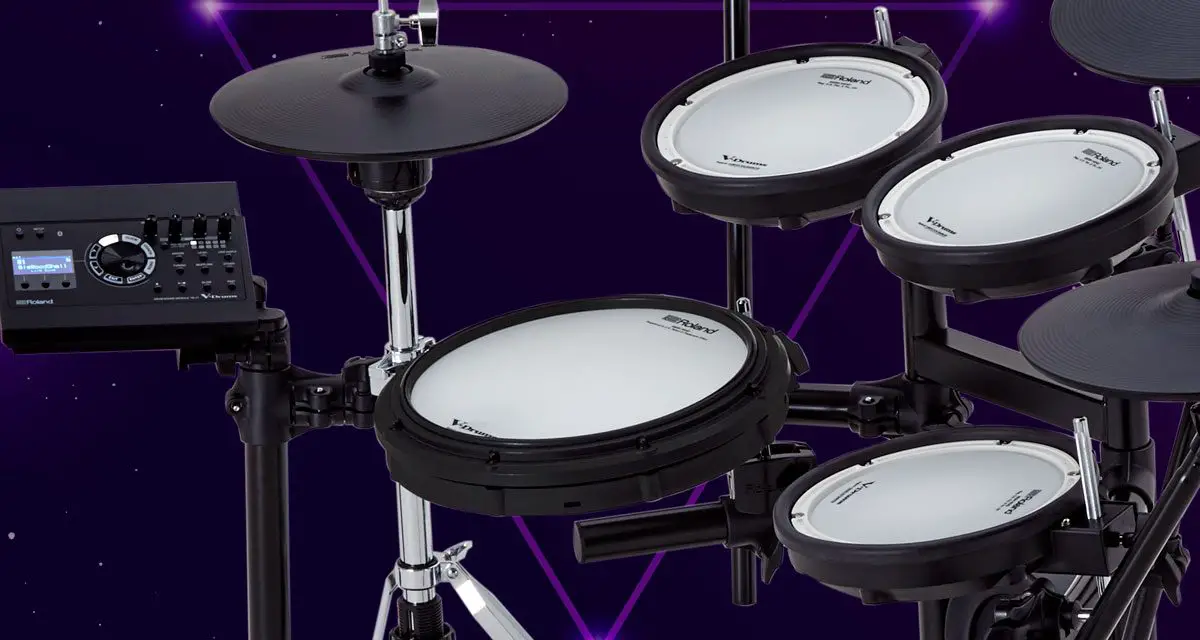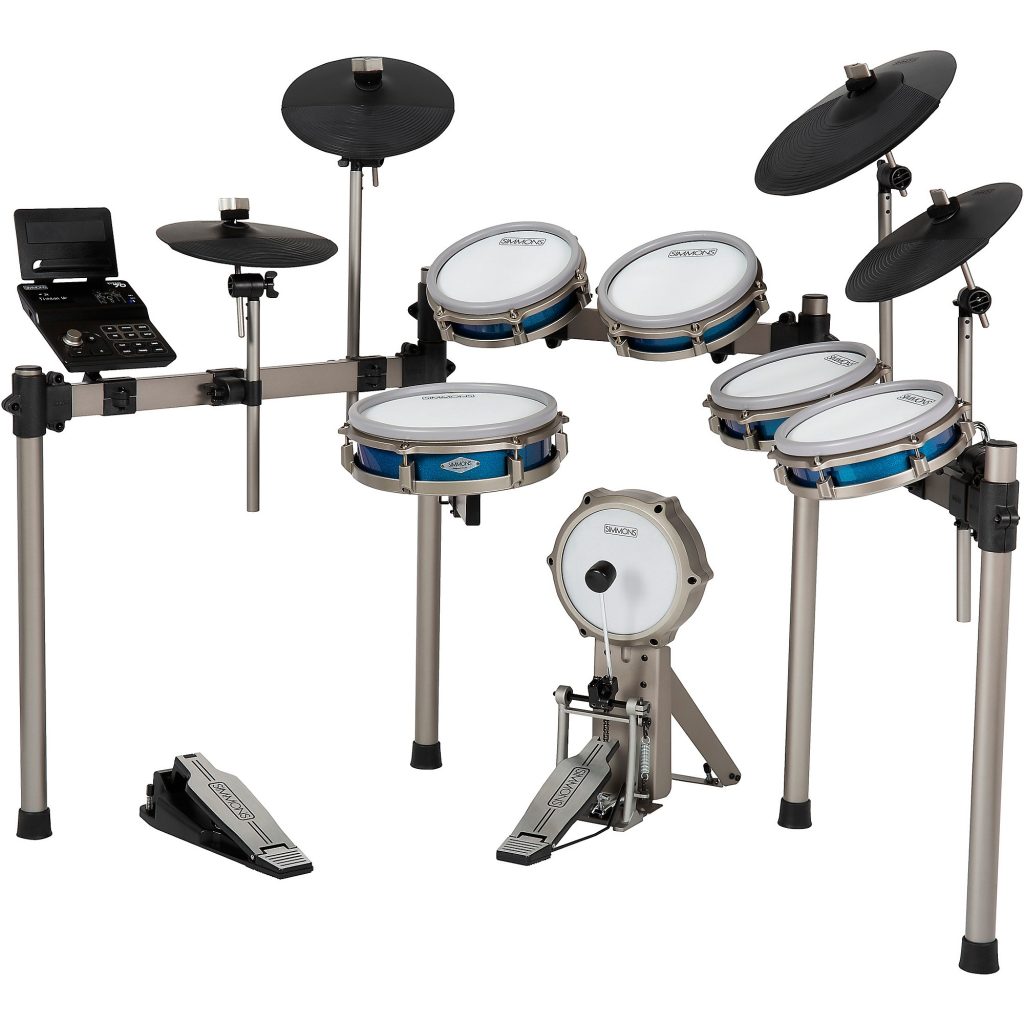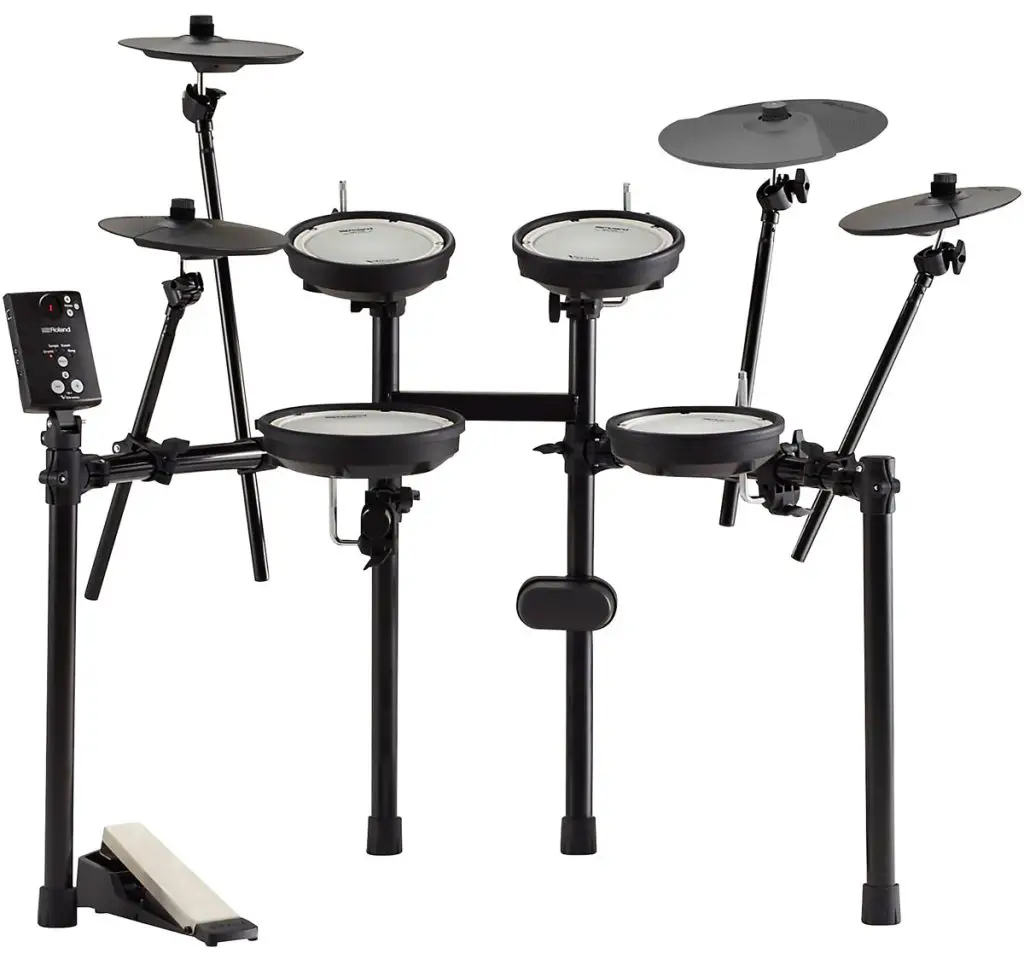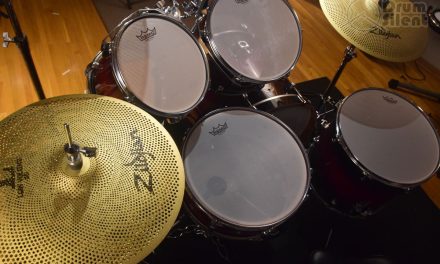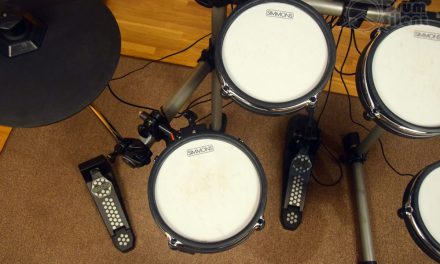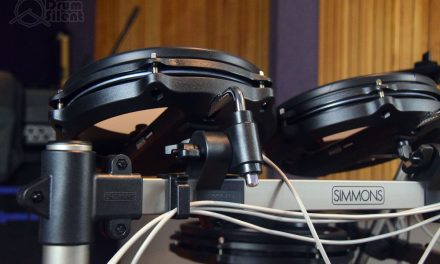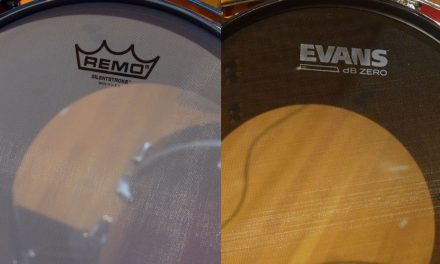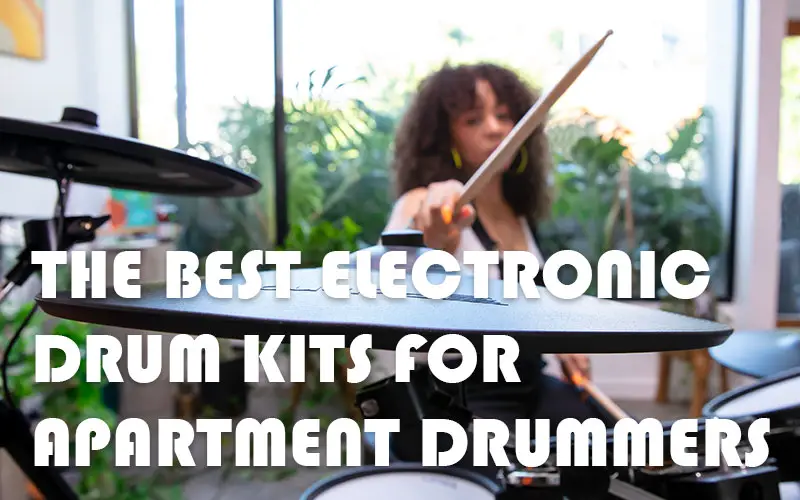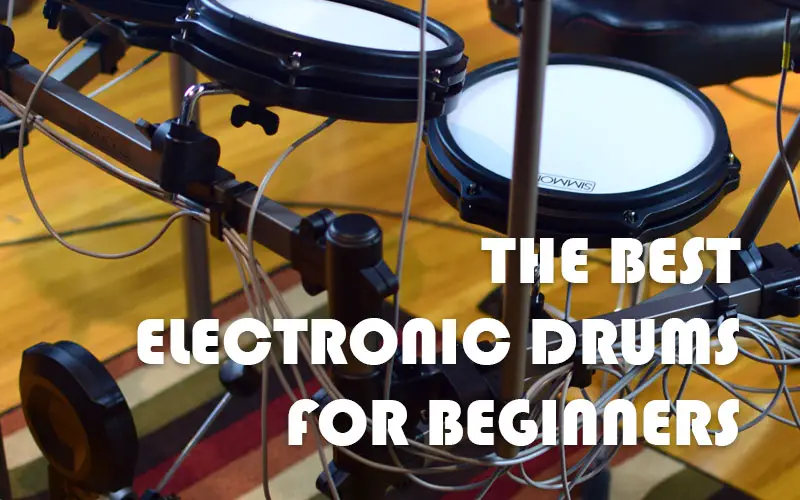Electronic drum kits can work well for heavy metal drummers but there are certain features that will make the experience feel more authentic and enjoyable.
What Makes a Heavy Metal Drum Kit?
There’s no specific rules as to what makes a good heavy metal drum kit. At the end of the day it comes down to the drummer behind the kit and their own personal preferences. But if you had to define what makes a heavy metal drum kit in a quick description, it would be powerful, punchy drums, a variety of cymbals and of course double bass. That seems a little overly simplified but it gets us going in the right direction. Let’s take a look at how that translates to an electronic drum kit.
Double Kick Bass Pedal Support
This is a big one. Double bass becomes essential when you get into the more extreme niches of heavy metal and it’s hard to avoid it. Depending on what you’re into, you might need to constantly play double bass or at a minimum use it for accents and smaller parts within the songs you’re playing.
Finding a kit that supports your double bass pedal will be essential. I know from experience that double bass drummers can be very picky about their pedal settings and how the pedal feels during play.
Kick Pad Width
One obvious thing to watch out for is a kick pad that is wide enough to support two drum beaters. The kick pad should also have enough sensitivity around the surface so that when you have two beaters working slightly off the center of the pad you still get solid response.
Kick Pad Height
Another thing to watch out for is the height of the kick pad. I’ve found on some electronic drum kits with smaller, fixed-height kick pads that the pad is too high for my preferred double pedal setup. I hadn’t ever considered this to be a factor until the first time I tried to hook my pedal up to an electronic kit.
I like to keep my beaters at a height where they are centered vertically on a 22 inch acoustic kick drum, and that was actually too short for some of the taller kick pads on some electronic drum kits. I didn’t like having to raise the height of my kick drum beaters when moving the pedal to an electronic kit since it changed the feel. So for double bass I usually prefer a kit that gives me more vertical space to work with as well as horizontal so I can keep the pedal settings the same as on my acoustic drum kit.
Kick Pad Sensitivity and Response
If you are a very fast double bass player a little more research as well as trial and error could be in order to make sure that you find a kit that has good enough sensitivity and response to handle fast, repeated strikes on the kick pad without dropping notes. It’s not a huge issue on more advanced electronic kits, but some budget kits can come up short in this area.
Velocity Curve Settings
Depending on what you play and how you play, you might also want your kick drum to have very little variation in volume no matter how hard you strike the pad, similar to what you hear when drummers trigger the kick on an acoustic drum kit. It’s worth taking a close look at the module settings or check the manual before buying to make sure you can change the velocity curve settings for the kick pad to accomplish this.
Be Willing to Upgrade or Swap Kick Pads
If you already have an electronic drum kit but just don’t like how the pad feels or works with your double bass pedal, you can always look into swapping out the kick drum pad for something different. There’s lots of good kick drum pads on the market that you can try out. Just make sure that whatever your switching to is supported by your drum module. Roland drums tend to be a good example for this since you can often buy a cheaper kit that has support for their better pads if you want to upgrade.
Use Dual-Zone Tom Pads For More Cymbals
Many electronic drum kits have just hi-hats, maybe one or two crash cymbal pads and a ride cymbal pad. This can feel limited, and metal drummers often want more cymbal variety around the kit.
An easy workaround for those limitations is to get an electronic drum kit that has multi-zone tom pads. You can usually assign cymbal sounds to the rims of dual-zone toms, which can effectively add more cymbals around the kit without having to add more cymbal pads. So you can assign a splash, china or different types of crash cymbals to the rims of the toms and add a wider variety of sounds to work with.
Cymbal Chokes
This is a feature that you’ll find on most kits, but if you get into the budget kit realm sometimes the feature is missing. Usually at least the crash cymbal pads have choke features but it can also be found on ride and hi-hat pads as well. I can’t imagine trying to play thrash metal drums without cymbal chokes.
Closed Hi-Hats While Playing Double Bass
There may be times where you want to play a closed hi-hat sound while also playing double bass. Many electronic drum kits have settings that allow you to set the hi-hat to permanently closed rather than having to use the hi-hat pedal to keep it closed. This is similar to releasing a clutch on an acoustic hi-hat to keep it closed. If your play style requires closed hi-hats along with double bass, you’ll want to keep an eye out for this feature.
Triple Zone Ride Cymbals
This one is arguable for any style of drums, really, but a three-zone ride cymbal can be much more enjoyable when playing metal on an electronic drum kit. Many budget drum kits come with single or double zone ride cymbals that can only produce a bell sound by hitting the pad harder rather than by hitting the bell. Stuff like that can feel pretty limiting if you rely on bell sounds a lot when you play.
It’s best to look for a kit that has a three zone ride cymbal that can make bow, edge and bell sounds similarly to an acoustic ride cymbal. Not only do you get the bell zone, but you can also then use the ride like a crash at times by hitting the edge rather than the bow.
Drum Sounds, Custom Kits and Layering
Last but not least is the drum sounds. You’ll want a drum module that has some good rock or metal drum sounds. This is pretty easy to find. It seems like every drum module always has a least one heavy metal kit along with rock kits that can work for metal.
Sound Design
Beyond the default kits, many metal drummers will prefer a module that allows you to mix and match the sounds and create your own drum kits. Even better yet is a module that allows you to layer drum sounds to create sounds with thicker textures for a more powerful sound. These types of features will allow you to really dial in your own sound.
Metal Drum VST’s
Another thing to consider is that you don’t need to rely on the drum module entirely for sounds either. If you want to incorporate a computer into your setup there are drum VST’s out there that have incredible sounding metal-focused kits that can sound much better than the kits in your drum module.
Recommended Drum Kits For Metal – Under $1000
For our first recommendations let’s take a look at some kits that are less than $1000. There are some surprisingly good kits in this price range if you are working with a smaller budget.
Simmons Titan 70
The Simmons Titan 70 has a lot to offer for under $1000 and is well worth taking a look at for metal drummers.
Standout features include the 10-inch dual-zone snare pad, the four dual-zone tom pads and the triple-zone ride cymbal pad. This combination of multi-zone pads is hard to find for drum kits under $1000. I like the dual zone tom pads for playing metal since I can assign more cymbal sounds to the rims, effectively adding to the scope and size of the kits. The kick drum pad is 7 inches in diameter and offers plenty of room for two bass drum beaters. The size of the kick pad also offers a good amount of flexibility for adjusting your beater height, so if you prefer a higher or lower beater height you’ll have some room to work with on this one.
The sound module has some really nice, modern drum sounds for metal and you can create and save custom kits. The module also allows you to tweak the drum sounds by changing things like pitch or by adding reverb and compression. There’s also an iOS app that makes editing the kits more of a visual experience.
Roland TD-1DMKX
The Roland TD-1DMKX is a compact kit with a sturdy frame and is an affordable option for metal drummers who want to get into Roland drums without breaking the bank.
When looking at the specs for this kit on paper it might seem like a fairly basic kit, and it is. The pads are a little smaller and the tom pads are only single zone. The DMKX version of this kit comes with an extra cymbal pad, though, which is why we recommend this version.
The TD-1 module is very basic and doesn’t even allow you to edit drum kits or create custom kits. Even though it’s lacking in features, the drum soundsare great and the module works well for drummers that just want to sit down and play rather than spending time tweaking sounds.
I like this one for metal drumming at it’s price point for a couple reasons. For one, it’s very sturdy and has one of the more sturdy racks when compared to other kits at the same price level. The sturdiness of the kit feels great for more aggressive play. It also has a kick pad that is wide enough for double bass pedals and the kick pad can be adjusted vertically to accommodate different beater heights.
This kit can also be upgraded over time. You can upgrade to one of Roland’s better drum modules or their larger and more fully featured pads depending on what module you have and which pads are supported. There is also the TD-07DMK version of this kit which has the TD-07 module, and that one has drum kit editing features.
Recommended Drum Kits For Metal – Under $2000
Spending up to $2000 on a kit will get you out of the lower budget range and you’ll start to find more fully featured pads and drum modules. There’s a few standout kits in this range that can work for metal drummers, and here’s our favorites.
NUX DM-8
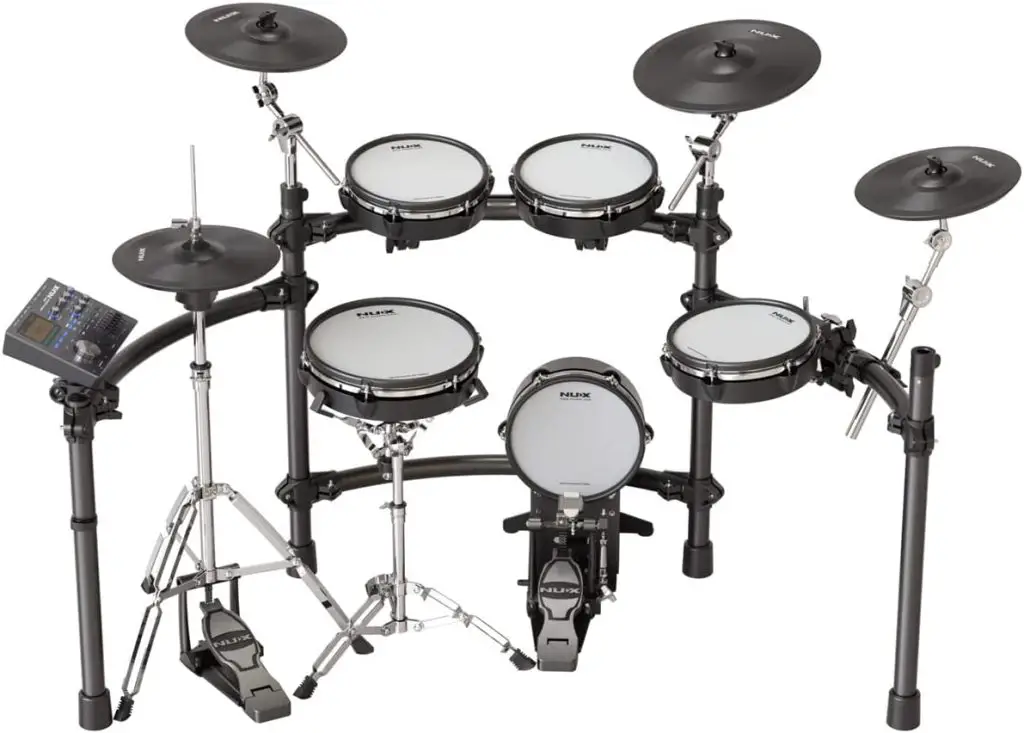
The NUX DM-8 is currently the flagship drum kit from NUX and offers a nice set of pads, a sturdy rack and independently mounted snare and hi-hat pads.
The 12-inch mesh snare drum feels very close to a 14 inch acoustic drum in size, and it mounts on a traditional snare drum stand which is included. The snare drum has a triple zone design and it supports techniques such as rim shots and cross sticking. The three 10-inch dual zone tom pads are all mesh and provide a good amount of playing surface. The 10-inch kick pad has a good amount of surface area as well which can give you some flexibility when setting beater heights and when using double pedals.
The cymbals on this kit can be played all the way around the full the surface of the pad, which is great, and they all have choke capabilities. The ride cymbal is a 14-inch triple zone pad with edge bow and bell zones. The two 12-inch crash cymbals have edge and bow zones. The 12-inch hi-hat pad has edge and bow zones as well, and it mounts onto a real hi-hat stand, which is included.
The drum module includes 30 preset drum kits and also has 18 slots for saving custom drum kits. In addition to creating kits with any of the internal sounds, you can also load in your own sounds samples as wav files via USB. As far as effects go, EQ and compression can be adjusted for individual or for the entire kit. There are also overdrive and reverb effects that can be applied to the whole kit.
The module also has a lot of nice connectivity features for recording and outputting to different types of devices. The module can send 14 individual tracks of audio over USB for multi-track recording with a DAW. MIDI signals can also be sent over USB or via the MIDI output. There is a USB disk port for importing samples. There are also extra tom and cymbal expansion ports to add one more of each type of pad.
ATV EXS-3CY
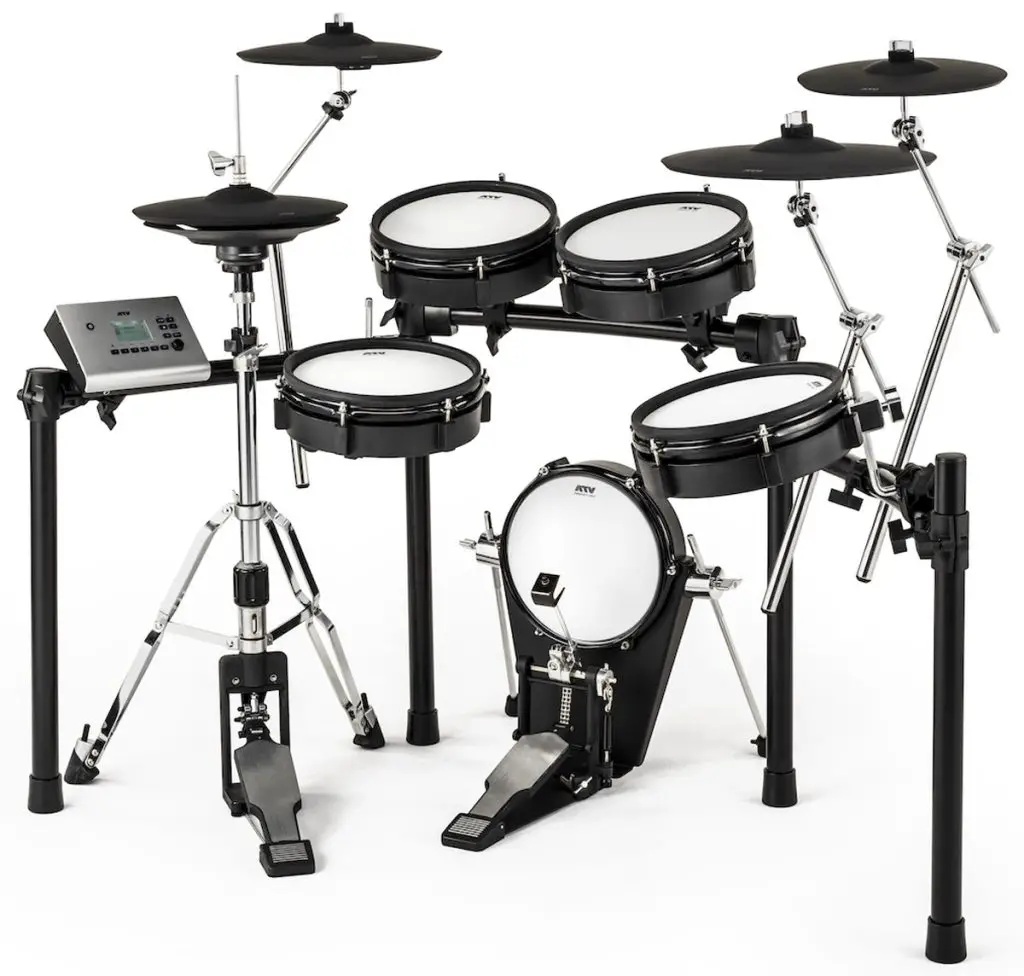
The ATV EXS-3CY drum kit offers a nice lineup of pads and a great sounding drum module with low latency for very responsive feel during play.
This is the smaller version of the EXS series of drum kits from ATV. The mesh pads on this kit use three sensors to create excellent response and feedback during play. The snare and toms are all 10-inch mesh pads. The kick pad is also 10-inches and has large enough surface area to fit single or double pedals with varying beater heights.
The cymbal pads are all 360 degree pads that can be triggered all the way around the surface. The hi-hat is a really nice 12 inch pad with an optical system, which makes it feel very responsive to different types of hi-hat play and techniques. The two crash cymbals are 12-inch pads and the ride is a 14-inch pad with three zones for bell, bow and edge sounds.
The xD3 module that comes with this kit is focused more on providing low latency playback and high quality, natural drum sounds rather than providing sound design features. The drum kits sound very tight and focused, like you’re sitting right behind a kit in a dry studio room. There are only 5 preset kits in the module, but you can download more from the ATV website. They also have plenty of extra drum sounds for sale on their site.
Connectivity wise, this module has stereo outputs and a single audio input jack. There is MIDI output over USB. One of the limitations of this module is that there is no multi-channel audio output for recording, which is odd considering how good the module sounds, which limits it’s recording capabilities. So if you want to use this module for recording you’ll need to rely on MIDI or work with the stereo outputs only.
This kit is a good pick if you want a very natural sounding module and excellent response from the pads, especially the hi-hats. But it’s output limitations might not be ideal if you want to record the audio output.
Alesis DM10 MKII Pro
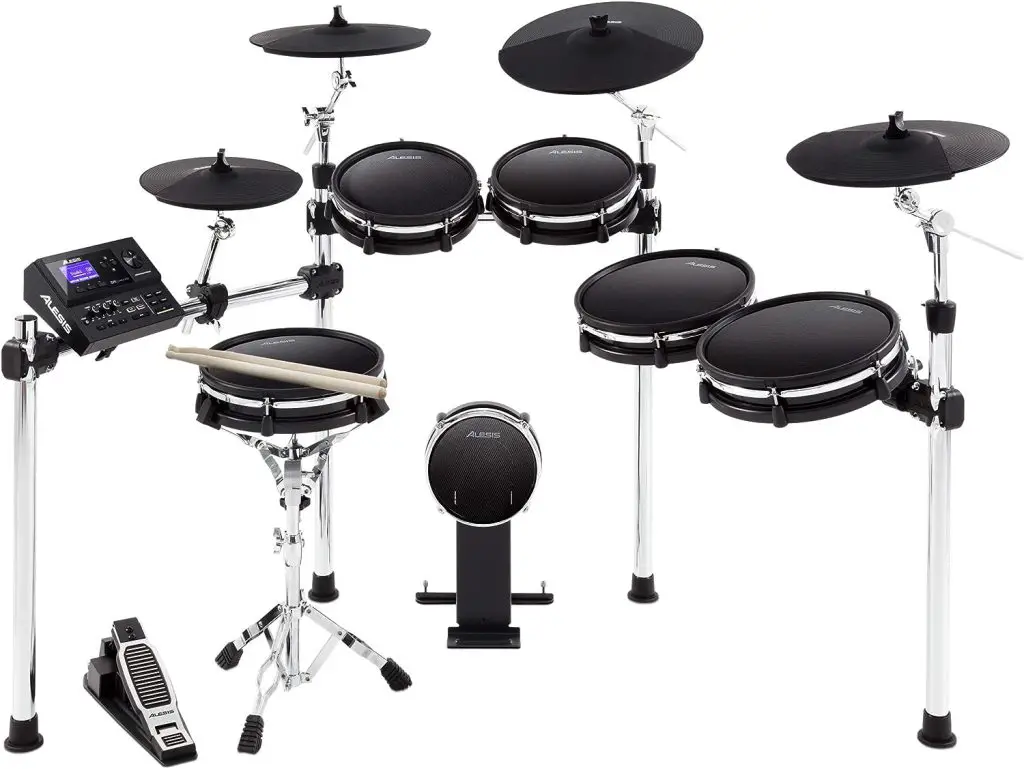
The Alesis DM10 MKII Pro drum kit offers some nice features for it’s price point. It has large mesh pads, a wider rack and some neat features in the drum module.
This kit has a dual zone mesh pads for all of the toms and snare. The snare pad is 12-inch mesh pad that mounts on a snare drum stand. There are also two 10-inch and two 12-inch tom pads. The kick pad is an 8-inch pad and it’s large enough to fit double bass pedals with varying beater heights.
The cymbal pad lineup on this kit is pretty nice overall. There is a 12-inch single zone hi-hat pad, which is controlled via a foot controller pedal. There are two 12 inch dual zone crash pads with edge and bow zones. The ride cymbal is a little larger 16 inches in diameter and it has edge, bow and bell zones.
The rack is a little wider than some compact kits. This is nice if you need a little more room to spread out and fully extend the linkage on a double bass pedal.
The drum module has some good features for those that like to sound design their kits. There are 80 preset kit built in with a library of 700 drum sounds to use, and 20 custom kit slots. You can also save kits to a USB drive if you run out of space internally. You can load your own samples and drum kits via the USB slot as well. There are plenty of ways to modify the drum sounds such as pitch, decay, panning, levels and muffling. There are also multi-effects available and reverb settings as well as master compression and EQ.
Expansion is a bit limited, since the pads on the kit use up all the available inputs in the sound module. But it has a decent amount of pads included so it’s not that big of a deal. This kit is fun to play and has a lot of sounds and custom kit possibilities, and it can be a good kit for drummers who want to spend more time playing around with custom drum kits and sounds.

